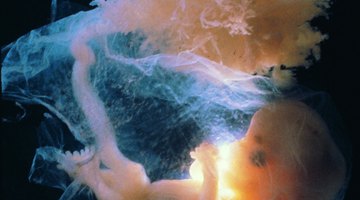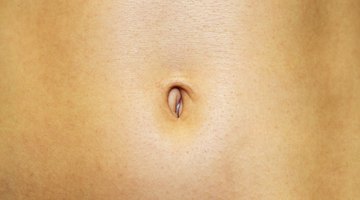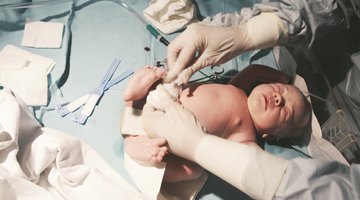How Long Does It Take a Newborn's Umbilical Cord to Fall Off?
The umbilical cord provides nutrients to your baby throughout the (approximately) 40 weeks of pregnancy. The cord is no longer needed after the birth, so it is snipped, leaving your infant with a small stump. Eventually, this stump dries up and falls off, leaving your baby with an adorable little belly button. Knowing how to care for your baby's umbilical stump is important, so you can ensure that the area remains clean and free of infection.
Time Frame
Most babies lose their umbilical cord stump in the first few weeks of life. The American Academy of Pediatrics says that the stump should shrivel up and fall off by the time a baby is 8 weeks old. If this does not happen, there may be an issue, and the AAP recommends seeing your baby's doctor if the stump remains longer than two months.
Be Patient

The Consequences of a Baby Born at Eight Months
Learn More
An umbilical cord stump should dry up and fall off on its own. Although this can be a slow process, never pick at the stump or assist in disconnecting it from your infant. MayoClinic.com says it's important for the umbilical stump fall off on its own. When the cord does fall off, the AAP indicates that it's normal to notice some blood, but if the stump is actively bleeding, contact your pediatrician.
Caring for the Stump
The most important way to keep your infant's umbilical cord healthy is to keep it dry. Until the umbilical cord falls off, only give your baby sponge baths, not in a baby bathtub or full-size tub where the baby's abdomen would be submerged. Also be sure to fold down the baby's diaper so that urine does not touch the stump.
Signs of Infection

Belly Button Discharge in Newborns
Learn More
Although infections in umbilical cord stump are uncommon, they are serious and require immediate medical attention. If you notice red skin around the base of the stump, or if your infant cries when it is touched, the cord may be infected. A foul-smelling yellow discharge is another sign of infection, although a hard scar tissue that oozes light yellow liquid after the cord falls off may be umbilical granuloma, a condition that normally correct itself within a week, says the AAP.









